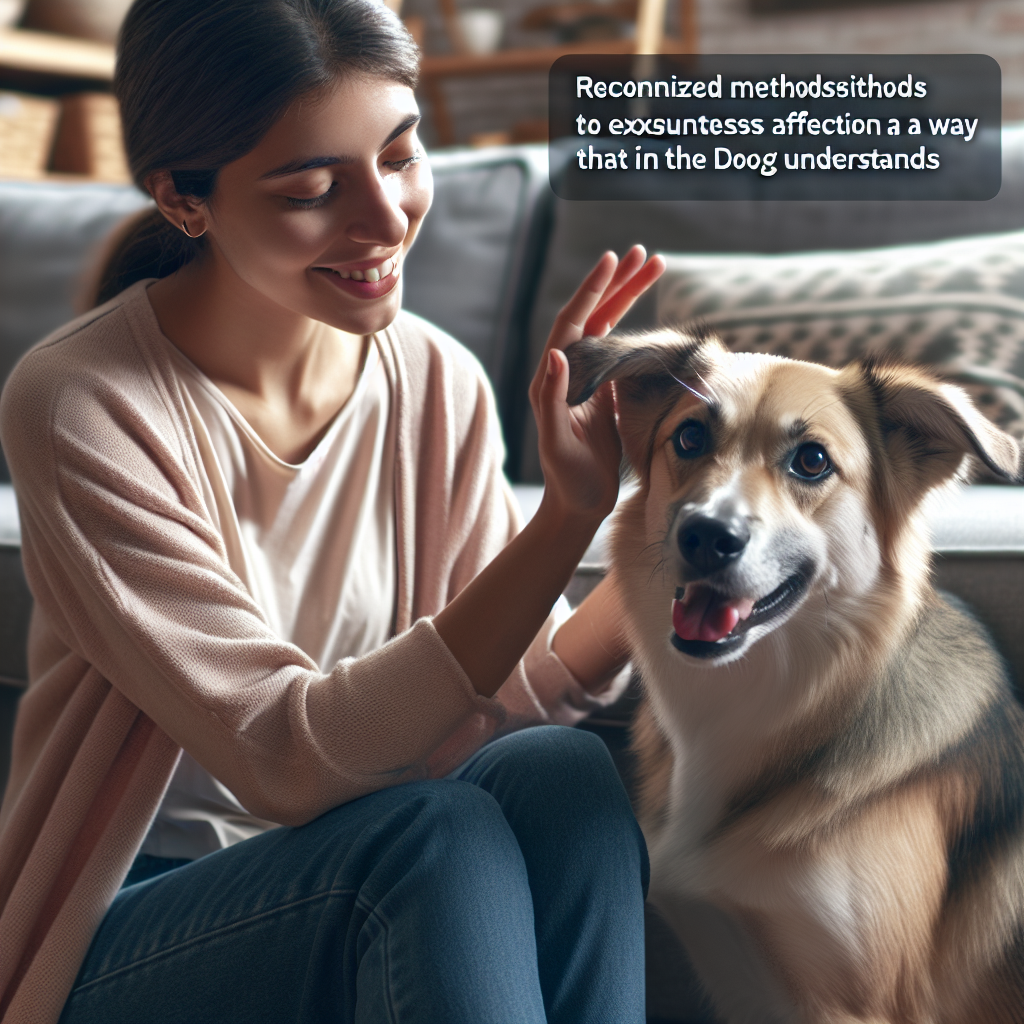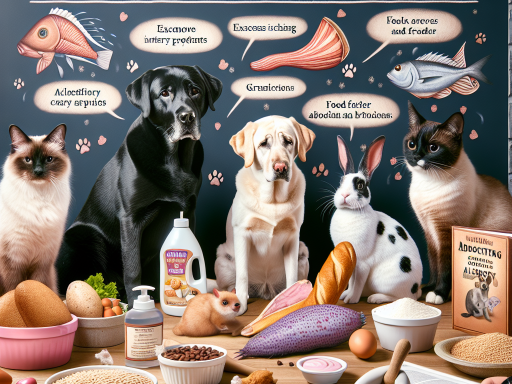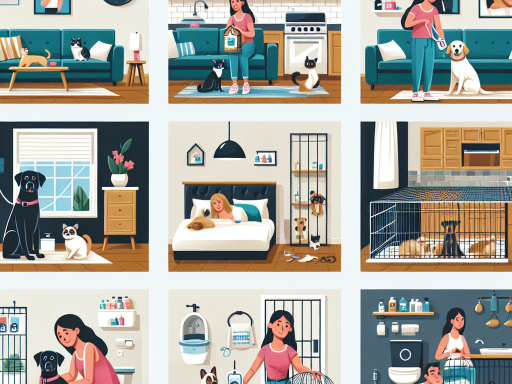Understanding Canine Communication
Welcome to the fascinating world of canine communication! If you’ve ever wondered what your furry friend is trying to tell you, you’re in the right place. Dogs may not speak our language, but they have a rich and expressive way of communicating. Let’s dive into the nuances of how dogs express themselves.
Body Language
One of the most powerful tools in a dog’s communication toolkit is their body language. Here are a few key signs to look out for:
- Tail Position: A wagging tail often signifies happiness, but the speed and height of the wag can tell you more. A slow wag with the tail held low can indicate uncertainty, while a fast wag with the tail held high often means excitement.
- Ears: Dogs’ ears can be very expressive. Erect ears suggest attentiveness, while ears laid back against the head can indicate fear or submission.
- Posture: A relaxed dog will have a loose, wiggly body. Conversely, a stiff, tense body can suggest anxiety or aggression. Watch for signs like a hunched back or a tucked tail, which can indicate that your dog is feeling threatened.
Facial Expressions
Believe it or not, dogs have a wide range of facial expressions that convey their feelings. Take note of these common expressions:
- Eyes: Soft, relaxed eyes often indicate contentment. Hard stares, on the other hand, might be a warning sign. Pay attention to “whale eye,” where you can see the whites of their eyes, as this can signify discomfort or fear.
- Mouth: A relaxed mouth with a slightly open jaw can indicate a happy, relaxed dog. Conversely, a closed mouth with the lips pulled back might signal stress or aggression. Panting can also be a sign of stress if it’s not related to physical exertion.
Gestures and Movements
Dogs often use gestures and movements to communicate their needs and emotions. Here are some common ones:
- Pawing: When a dog paws at you, they’re often seeking attention. It’s their way of saying, “Hey, notice me!”
- Play Bow: This is when a dog lowers their front legs and keeps their hind end up in the air. It’s a clear invitation to play and indicates that your dog is in a friendly, playful mood.
- Rolling Over: While rolling over can be a sign of submission, it can also be a request for belly rubs if accompanied by a relaxed demeanor.
Scent Marking
Dogs have a highly developed sense of smell, and scent marking is a crucial part of their communication. When your dog sniffs around during walks, they are reading messages left by other dogs and leaving their own. This way of marking territory or signaling their presence is vital for social interactions.
Understanding Your Dog’s Unique Communication Style
Every dog is unique and may have their own specific ways of communicating with you. Spend time observing your dog in different situations to get a better understanding of their personal signals and cues. The more you pay attention, the more you’ll be able to tune into their needs and emotions.
Remember, the key to a strong bond with your dog is mutual understanding and respect. By learning to interpret their language, you’re taking a big step towards a deeper, more fulfilling relationship with your furry friend. Happy communicating!
The Power of Eye Contact
Ever felt like your dog can see right through you with those big, expressive eyes? Well, you’re not imagining it! Eye contact is one of the most powerful ways to connect with your furry friend. Let’s dive into why those shared gazes mean so much in the world of canine communication.
Building Trust and Bond
When you make eye contact with your dog, you’re doing more than just looking at each other. You’re building trust and strengthening the bond between you. Just as in human relationships, making eye contact with your dog shows them that they have your attention and that you care.
According to research, a mutual gaze between dogs and their owners can trigger the release of oxytocin, often dubbed the “love hormone,” in both parties. This hormone plays a significant role in social bonding and can make both you and your pet feel happy and connected.
Reading Emotions
Dogs are incredibly adept at reading human emotions through our eyes. When you look at your dog with love or concern, they can sense your emotions and often respond accordingly. They might come cuddle with you if they sense you’re sad or get excited if they see joy in your eyes.
On the flip side, your dog’s eyes can also tell you a lot about how they’re feeling. Are their eyes wide open and staring? They might be feeling excited or alert. Are they avoiding eye contact? This could be a sign of submission or anxiety. Learning to read these cues can help you better understand and respond to your dog’s needs.
Training Tool
Eye contact isn’t just about feelings; it’s also a practical tool in training. Encouraging your dog to maintain eye contact can help improve their focus and responsiveness to commands. Start by rewarding them with treats or praise when they make eye contact, reinforcing that this behavior is positive.
- Start in a quiet environment with minimal distractions.
- Hold a treat near your face and call your dog’s name.
- When your dog makes eye contact, reward them immediately with the treat and lots of praise.
- Gradually increase the duration of eye contact before giving the reward.
Over time, your dog will learn to look at you for guidance, which can be invaluable during training sessions and in everyday situations.
Respecting Boundaries
While eye contact is generally positive, it’s essential to respect your dog’s boundaries. Prolonged or intense eye contact can sometimes be perceived as a threat, especially with dogs who are anxious or unfamiliar with you. Always observe your dog’s body language and look for signs of discomfort, such as turning their head away or showing the whites of their eyes (often called “whale eye”).
Making the Most of It
To make the most of eye contact with your dog, try incorporating it into your daily interactions. Use it during playtime, training, or even just while relaxing together. The more you engage in these mutual gazes, the more you’ll both benefit from the deeper connection and understanding that comes with it.
So next time you find yourself locking eyes with your dog, remember that it’s more than just a look—it’s a powerful tool for building trust, understanding emotions, and enhancing your bond. Happy gazing!
Have you ever noticed how your furry friend seems to melt under your touch? Dogs have a special connection with gentle touch, and it can work wonders in strengthening your bond with them.
The magic of gentle touch lies in its ability to communicate love, comfort, and reassurance to your canine companion. When you pet your dog in a gentle and soothing manner, it can help them feel relaxed and secure. It’s like giving them a little massage that not only feels good but also promotes feelings of well-being.
So, how can you use gentle touch to enhance your relationship with your dog? Here are a few tips to keep in mind:
1. Start with the basics: Begin by gently stroking your dog’s back or head. Pay attention to their body language – if they lean into your touch, wag their tail, or close their eyes in contentment, you’re on the right track.
2. Use slow and deliberate movements: Dogs are sensitive creatures, so it’s important to be mindful of your touch. Avoid sudden or rough movements, as this can startle or upset your dog. Instead, opt for slow, gentle strokes that convey your affection and care.
3. Focus on areas they enjoy: Every dog has their own preferences when it comes to being petted. Some may love belly rubs, while others may prefer scratches behind the ears. Pay attention to your dog’s reactions and adjust your touch accordingly.
4. Incorporate massage techniques: Just like humans, dogs can benefit from a little massage therapy. You can gently massage their muscles, particularly in areas where they may be tense or sore. This can help promote relaxation and alleviate any discomfort they may be experiencing.
5. Be mindful of your dog’s cues: While most dogs enjoy being petted, it’s important to respect their boundaries. If your dog pulls away, yawns, licks their lips, or shows signs of discomfort, it’s best to give them some space. Not all dogs enjoy being touched in the same way, so be attuned to your dog’s preferences.
Remember, the power of gentle touch lies in its ability to communicate love, trust, and companionship to your dog. By incorporating this simple yet powerful gesture into your interactions, you can deepen your bond with your canine companion and create moments of joy and connection that will last a lifetime. So, go ahead – give your furry friend a little extra love and attention through the magic of gentle touch.
“`html
The Magic of Gentle Touch
- Start with the basics: Begin by gently stroking your dog’s back or head.
- Use slow and deliberate movements to avoid startling your dog.
- Focus on areas they enjoy, such as belly rubs or ear scratches.
- Incorporate massage techniques to promote relaxation and comfort.
- Be mindful of your dog’s cues and adjust your touch accordingly.
“`
Vocal Cues and Their Meanings
Have you ever wondered what your dog is trying to tell you with its various barks, whines, and growls? Understanding canine vocal cues can significantly enhance your bond with your furry friend. Let’s delve into the fascinating world of doggy dialogue and decode the language of our four-legged companions.
Types of Vocal Cues
Dogs use a variety of sounds to communicate their needs, emotions, and even warnings. Here are some common vocalizations and what they typically mean:
- Barking: This can have several meanings depending on the context. A bark can be a greeting, an alert, or a call for attention. Pay attention to the pitch and repetition. Rapid, high-pitched barking usually indicates excitement or playfulness, while slow, low-pitched barking often signals a warning or threat.
- Whining: Whining is usually a sign of discomfort, anxiety, or a need for something. If your dog is whining, it might need to go outside, be hungry, or simply want some attention. Chronic whining might indicate underlying anxiety or health issues, so it’s important to observe the context and frequency.
- Growling: Growling is a more serious vocal cue that typically indicates fear, aggression, or territorial behavior. It’s important not to punish your dog for growling, as it’s their way of communicating discomfort. Instead, understand the root cause and address it gently.
- Howling: This is often a form of long-distance communication or a response to high-pitched sounds like sirens. Some breeds, like Huskies, are more prone to howling. It can also be a sign of separation anxiety if your dog howls when left alone.
- Sighing: Yes, dogs sigh too! A deep sigh often accompanied by lying down can indicate contentment and relaxation, while a short sigh might show frustration or boredom.
Interpreting Context
Just like humans, the meaning behind a dog’s vocalization can change depending on the situation. Here are some tips to help you interpret these sounds accurately:
- Observe Body Language: Combine vocal cues with body language for a clearer picture. A wagging tail paired with barking usually means excitement, while a stiff body and growling indicate stress or aggression.
- Know Your Dog: Each dog is unique. Spend time observing your pet’s behavior and vocalizations in different contexts. This will help you understand its specific signals better.
- Consistency is Key: Dogs are creatures of habit. Consistent reactions to their vocal cues help them understand what’s expected of them. If you always respond positively when they bark to go outside, they’ll learn that this behavior gets a favorable response.
Responding to Vocal Cues
How you respond to your dog’s vocalizations can influence their behavior. Here are some strategies to consider:
- Positive Reinforcement: Reward your dog for appropriate vocalizations. For instance, if they bark to alert you of something important, praise them or give a treat. This reinforces positive behavior.
- Stay Calm: Dogs can pick up on your emotions. Respond calmly to their vocal cues, especially if they are showing signs of fear or aggression. Your calm demeanor can help soothe them.
- Meet Their Needs: Address the cause of the vocalization. If your dog is whining to go outside, take them out. If they are barking out of boredom, engage them in play or give them a toy.
In conclusion, paying attention to your dog’s vocal cues can deepen your understanding and strengthen your relationship. With a little patience and observation, you’ll soon be fluent in your dog’s unique language, making your bond even more special.
Now, let’s talk about the importance of spending quality time with your furry friend and engaging in playful activities. This is crucial for building a strong bond with your canine companion and ensuring their overall well-being.
**Quality Time and Play**
Spending quality time with your dog is not only enjoyable for both of you, but it also helps strengthen your relationship. Whether it’s going for a walk, playing fetch in the park, or simply cuddling on the couch, these moments create lasting memories that your dog will cherish.
**1. Bonding through Play**: Engaging in playtime with your dog is not only fun but also essential for their mental and physical health. Playing games like tug-of-war, hide-and-seek, or interactive toys can help stimulate their mind and provide much-needed exercise.
**2. Socialization**: Taking your dog to the dog park or arranging playdates with other friendly dogs is a great way to socialize them and help them develop important social skills. This can prevent behavioral issues and ensure they feel comfortable around other animals.
**3. Mental Stimulation**: Interactive toys, puzzle feeders, and training sessions are excellent ways to keep your dog mentally stimulated and prevent boredom. A bored dog is more likely to exhibit destructive behaviors, so it’s essential to provide them with mental exercises to keep them engaged.
**4. Exercise**: Regular exercise is vital for your dog’s overall health and well-being. Whether it’s a long walk, a run in the park, or a game of frisbee, physical activity helps maintain their weight, strengthens their muscles, and improves their cardiovascular health.
**5. Relaxation**: Just like humans, dogs also need downtime to relax and unwind. Spending quiet moments with your dog, petting them gently, or simply sitting together can help them feel calm and secure.
By making time for these activities, you are not only providing your dog with essential mental and physical stimulation but also strengthening the bond between you. Remember, every dog is unique, so it’s essential to find activities that suit your dog’s personality and preferences.
Incorporating quality time and play into your routine can lead to a happy, healthy, and well-adjusted dog. So, put down your phone, grab your dog’s favorite toy, and create some unforgettable memories together. Your furry friend will thank you for it!
—
“`html
Now, let’s talk about the importance of spending quality time with your furry friend and engaging in playful activities. This is crucial for building a strong bond with your canine companion and ensuring their overall well-being.
Quality Time and Play
- Bonding through Play: Engaging in playtime with your dog is not only fun but also essential for their mental and physical health. Playing games like tug-of-war, hide-and-seek, or interactive toys can help stimulate their mind and provide much-needed exercise.
- Socialization: Taking your dog to the dog park or arranging playdates with other friendly dogs is a great way to socialize them and help them develop important social skills. This can prevent behavioral issues and ensure they feel comfortable around other animals.
- Mental Stimulation: Interactive toys, puzzle feeders, and training sessions are excellent ways to keep your dog mentally stimulated and prevent boredom. A bored dog is more likely to exhibit destructive behaviors, so it’s essential to provide them with mental exercises to keep them engaged.
- Exercise: Regular exercise is vital for your dog’s overall health and well-being. Whether it’s a long walk, a run in the park, or a game of frisbee, physical activity helps maintain their weight, strengthens their muscles, and improves their cardiovascular health.
- Relaxation: Just like humans, dogs also need downtime to relax and unwind. Spending quiet moments with your dog, petting them gently, or simply sitting together can help them feel calm and secure.
By making time for these activities, you are not only providing your dog with essential mental and physical stimulation but also strengthening the bond between you. Remember, every dog is unique, so it’s essential to find activities that suit your dog’s personality and preferences.
Incorporating quality time and play into your routine can lead to a happy, healthy, and well-adjusted dog. So, put down your phone, grab your dog’s favorite toy, and create some unforgettable memories together. Your furry friend will thank you for it!
“`
Consistent Training and Positive Reinforcement
Hey there, fellow dog lovers! 🌟 Let’s talk about one of the absolute best ways to build a strong, healthy bond with your furry friend: consistent training and positive reinforcement.
You might be wondering why these two elements are so crucial. Well, dogs thrive on routine and clear communication. Just like us, they appreciate knowing what’s expected of them. When we couple that with a positive approach, we’re setting our pups up for success.
Why Consistency Matters
Consistency in training means that you follow the same rules and use the same commands. Imagine if you tried to learn something new, but every time you practiced, the instructions changed. Frustrating, right? Dogs feel the same way!
By being consistent, you’re helping your dog understand exactly what behaviors are desirable. It builds trust because your dog knows what to expect from you. This doesn’t just apply to commands like “sit” or “stay”—it also covers everyday routines. Feeding times, bathroom breaks, and even playtime should have a certain level of predictability.
The Magic of Positive Reinforcement
Positive reinforcement is essentially rewarding your dog for good behavior. This could be through treats, verbal praise, or even a favorite toy. The idea here is to encourage your dog to repeat behaviors that earn them rewards.
Here’s a fun fact: Studies have shown that positive reinforcement is far more effective than punishment. Why? Because it builds a happy, cooperative relationship. Your dog will be more eager to please you when they know good things come from good behavior.
So, how do you incorporate positive reinforcement into your training?
- Start Small: Begin with simple commands like “sit” and “stay.” Each time your dog successfully follows a command, reward them immediately. Timing is key!
- Use High-Value Rewards: Find out what motivates your dog the most. For some, it’s a tasty treat, while for others, it could be a squeaky toy or even some belly rubs.
- Be Generous with Praise: Never underestimate the power of a happy, excited tone of voice. Dogs love to hear that they’ve made you proud!
Setting Up for Success
Creating a positive training environment is just as important as the training itself. Make sure sessions are short and sweet—aim for about 10-15 minutes at a time. This keeps your dog engaged and prevents frustration. Consistent practice is more effective than marathon sessions.
Also, try to end on a high note. If your dog is struggling with a command, switch to something they know well before finishing up. This leaves them feeling confident and ready for the next session.
Celebrating Progress
Remember to celebrate the small victories. Training isn’t always a straight path, and there will be ups and downs. Patience is your best friend here. Every step your dog takes toward learning a new behavior is a win, no matter how small.
By focusing on consistent training and positive reinforcement, you’re not just teaching your dog new tricks—you’re building a bond based on trust, respect, and lots of love. Happy training! 🐾
Providing a Safe and Comfortable Environment
Creating a safe and comfortable environment for your furry friend is essential for their well-being and happiness. Dogs are sensitive creatures and thrive in environments where they feel secure and at ease. Here are some tips on how to ensure your canine companion feels right at home:
1. Safe Space
Every dog needs a place they can retreat to when they need some alone time or just want to relax. Provide a comfortable bed or crate in a quiet corner of your home where your dog can feel safe and secure. Make sure this area is off-limits to loud noises or high traffic areas.
2. Puppy-Proofing
Just like with babies, you need to puppy-proof your home to prevent any accidents or injuries. Keep toxic plants, small objects, and electrical cords out of reach. Make sure your trash cans are secured to avoid any scavenging mishaps.
3. Temperature Control
Make sure your home is at a comfortable temperature for your dog, especially during extreme weather conditions. Provide a warm blanket in colder months and access to shade and water during the summer. Be mindful of any drafts or direct sunlight that may make your furry friend uncomfortable.
4. Regular Exercise
Dogs need daily exercise to stay healthy and happy. Make sure your dog gets enough physical activity either through walks, playtime, or training sessions. A tired dog is a happy dog, so help them burn off that excess energy.
5. Nutritious Diet
Feeding your dog a balanced and nutritious diet is crucial for their overall health and well-being. Consult with your veterinarian to determine the best food options for your dog based on their age, size, and activity level. Make sure they always have access to clean and fresh water.
6. Veterinary Care
Regular visits to the vet are essential to keep your dog healthy and to catch any potential issues early on. Stay up-to-date on vaccinations, flea and tick prevention, and dental care. Your vet can also provide advice on nutrition and behavior training.
7. Mental Stimulation
Just like humans, dogs need mental stimulation to keep their minds sharp and engaged. Provide interactive toys, puzzles, and training exercises to keep your dog entertained and mentally stimulated. This will help prevent boredom and destructive behaviors.
By creating a safe and comfortable environment for your dog, you are ensuring that they feel loved and valued. Remember, your furry friend relies on you for their well-being, so make their environment a priority. With a little effort and attention to detail, you can create a space where your dog feels secure, happy, and at home.
Providing a Safe and Comfortable Environment
- Safe Space
- Puppy-Proofing
- Temperature Control
- Regular Exercise
- Nutritious Diet
- Veterinary Care
- Mental Stimulation





